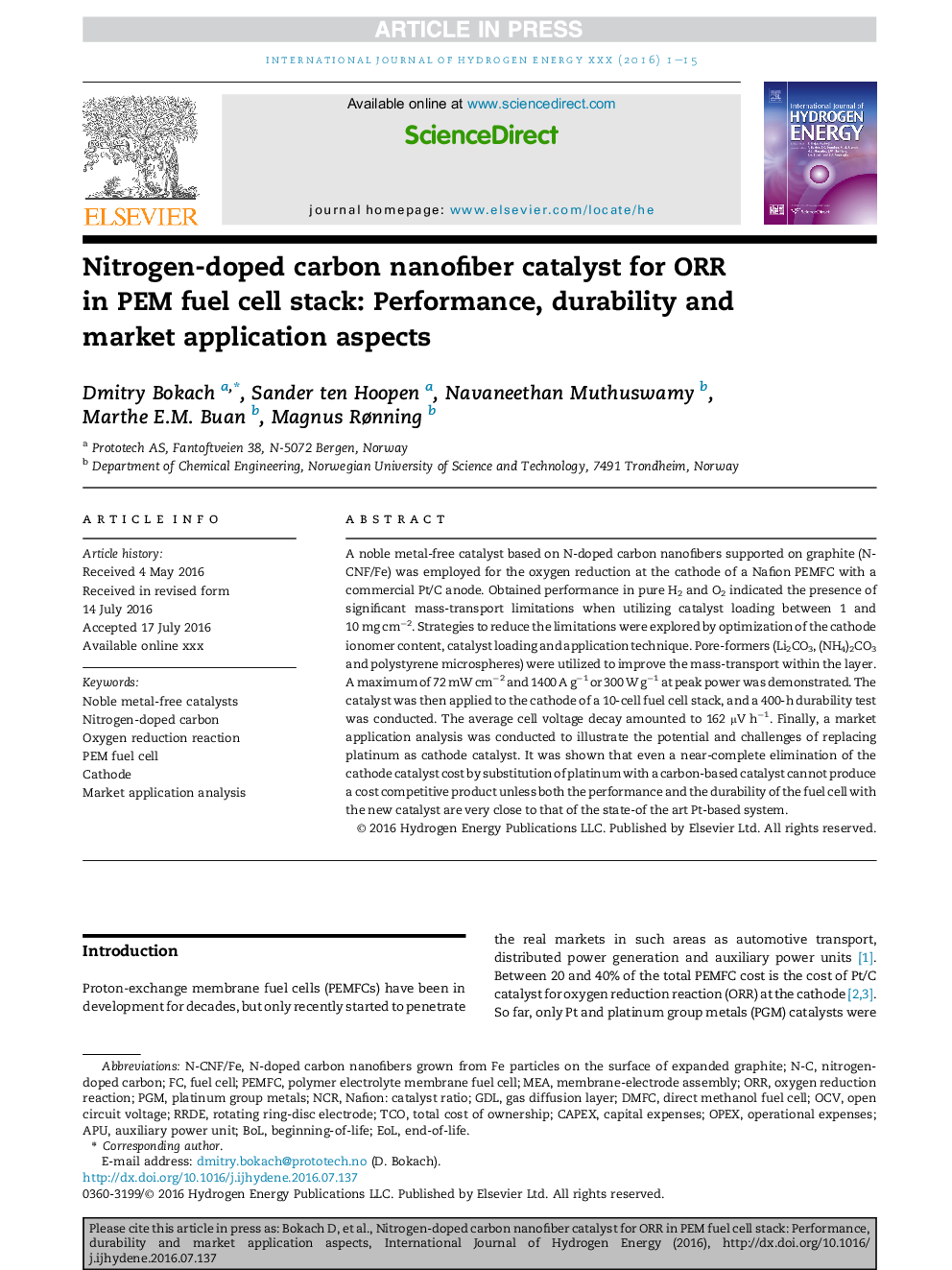| Article ID | Journal | Published Year | Pages | File Type |
|---|---|---|---|---|
| 5148244 | International Journal of Hydrogen Energy | 2016 | 15 Pages |
Abstract
A noble metal-free catalyst based on N-doped carbon nanofibers supported on graphite (N-CNF/Fe) was employed for the oxygen reduction at the cathode of a Nafion PEMFC with a commercial Pt/C anode. Obtained performance in pure H2 and O2 indicated the presence of significant mass-transport limitations when utilizing catalyst loading between 1 and 10 mg cmâ2. Strategies to reduce the limitations were explored by optimization of the cathode ionomer content, catalyst loading and application technique. Pore-formers (Li2CO3, (NH4)2CO3 and polystyrene microspheres) were utilized to improve the mass-transport within the layer. A maximum of 72 mW cmâ2 and 1400 A gâ1 or 300 W gâ1 at peak power was demonstrated. The catalyst was then applied to the cathode of a 10-cell fuel cell stack, and a 400-h durability test was conducted. The average cell voltage decay amounted to 162 μV hâ1. Finally, a market application analysis was conducted to illustrate the potential and challenges of replacing platinum as cathode catalyst. It was shown that even a near-complete elimination of the cathode catalyst cost by substitution of platinum with a carbon-based catalyst cannot produce a cost competitive product unless both the performance and the durability of the fuel cell with the new catalyst are very close to that of the state-of the art Pt-based system.
Keywords
OPEXNCRMEATCOEOLCAPEXPGMGDLORROCVRRDEAPUDMFcBOLPEMFCRotating ring-disc electrodePEM fuel cellPolymer electrolyte membrane fuel cellPlatinum group metalsGas diffusion layertotal cost of ownershipMembrane-electrode assemblyCapital Expensesauxiliary power unitOxygen reduction reactionopen circuit voltageEnd-of-lifefuel celldirect methanol fuel cellCathodeNitrogen-doped carbon
Related Topics
Physical Sciences and Engineering
Chemistry
Electrochemistry
Authors
Dmitry Bokach, Sander ten Hoopen, Navaneethan Muthuswamy, Marthe E.M. Buan, Magnus Rønning,
